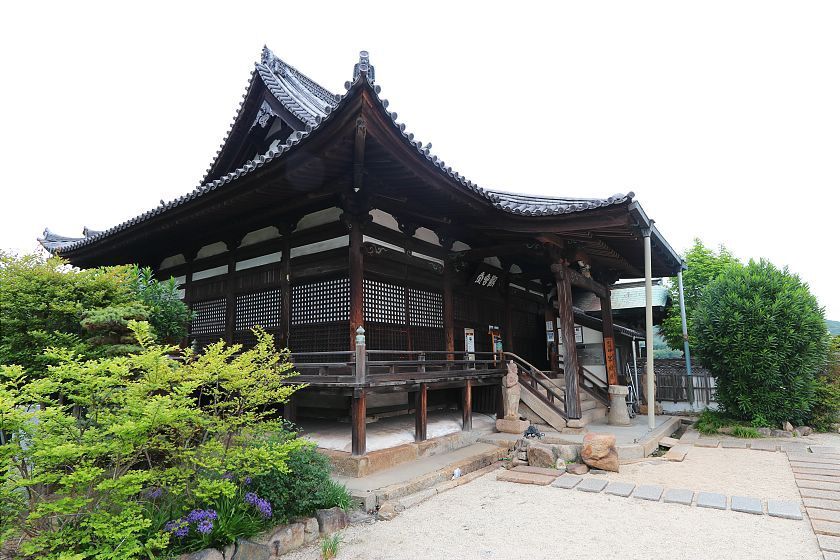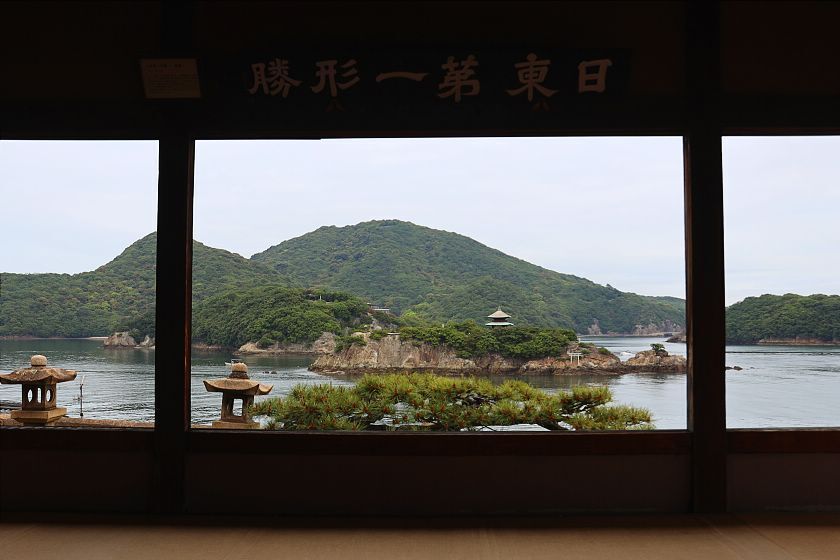A stroll through Tomonoura

A sleepy port town on the shores of the Seto Inland Sea, Tomonoura boasts attractive coastal views, historic buildings and plenty of local color - making for a relaxing full or half day excursion from Hiroshima City. To experience it for myself, I recently spent a varied and hugely enjoyable day exploring the town and its various highlights.
Arriving into Fukuyama Station by shinkansen, I changed to a local bus for a 35-minute ride south along the coast, eventually bringing me to a bus stop on the seafront directly opposite the town's little tourism information office.
Keen to see how things looked from above, I began by cutting across the town to Ioji - a temple belonging to the Shingon school of Buddhism, perched about halfway up a steep hillside some 500 meters to the rear of the port.
Despite the overcast sky, the town opened up before me, revealing a distinctive circular harbor, the curve of temple roofs and the steep, wooded crests of islands out in the bay. On a clear day, it is said you can see as far as the Shikoku mountain range, but today was not, it seemed, that day.

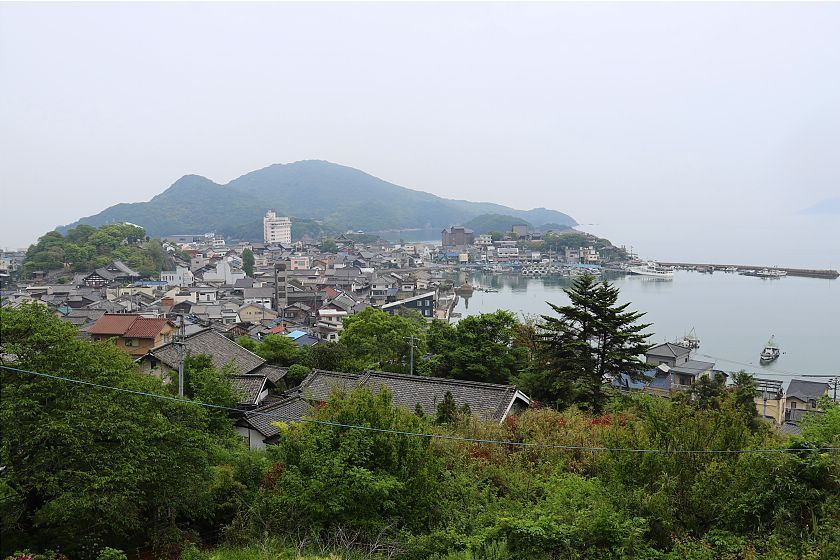
Making my way down a steep path leading from the temple's Niomon Gate towards the shore, I turned left and continued along a narrow residential street until I arrived at Tomonoura's most recognizable spot - a quaint, semicircular harbor lined with cobblestones and a stepped slope or gangi leading down to the water's edge.
Designed to allow easier access to boats for the loading and unloading of freight, this is in fact one of five features that, along with the lighthouse, hato (a stone breakwater guarding the harbor mouth), tadeba (a kind of covered sandpit used to scrape and repair ship hulls) and funabansho (guardhouse) would once have been found at major ports throughout Japan. Today however, Tomonoura is said to be the last remaining town where all five have survived in their original form from the Edo Period (1603-1868) to the present day.
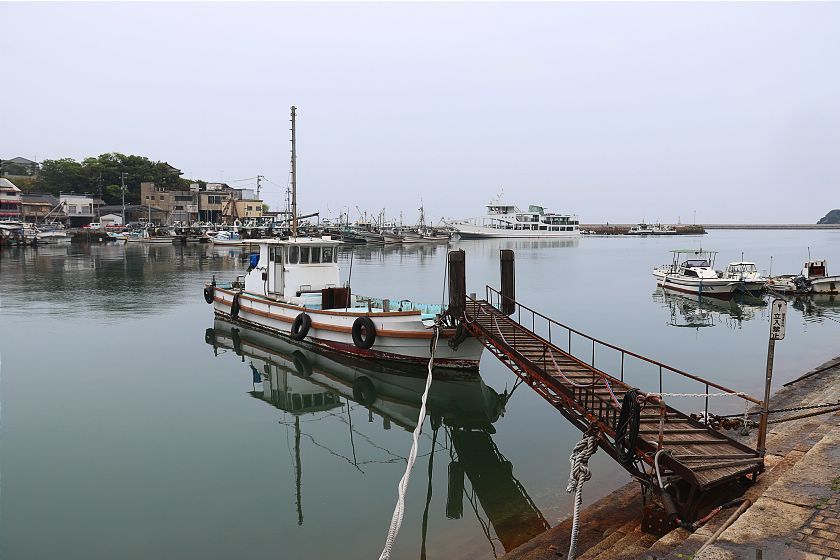
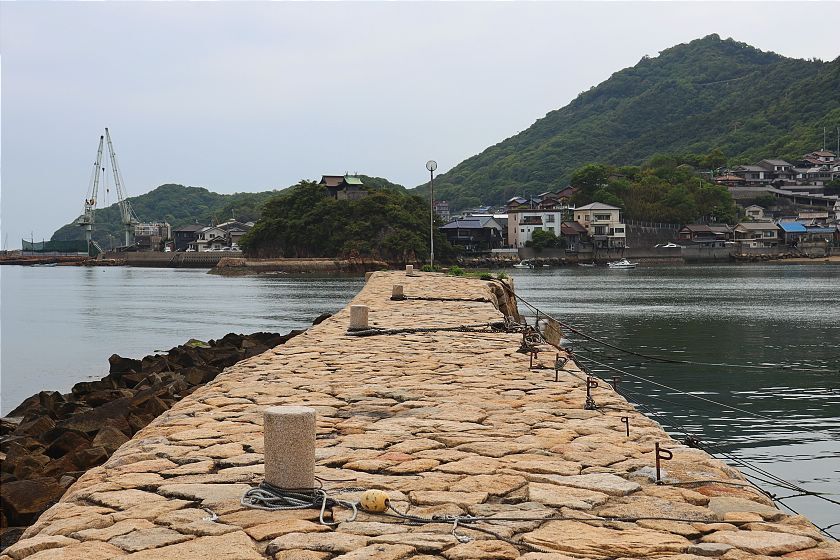
Of the five, the Joyato Lighthouse - built into the harbor at its southwestern end and standing eleven meters from base to tip - holds a special place among locals and has even been adopted as a symbol of the town.
Despite its peaceful atmosphere today, Tomonoura was in fact a key maritime port for much of its history, perfectly suited as a stopover on the vital shipping route extending from Kyushu all the way to Hokkaido. Taking advantages of the Seto Inland Sea's powerful tides - vast amounts of water flow in and out of the channel every day, creating one of the world's largest variations between low and high tide - sailors routinely traveled as far as they could in a single day, then docked at one of several ports along the way to await the next favorable tide, earning the town its nickname gport of waiting tides.h
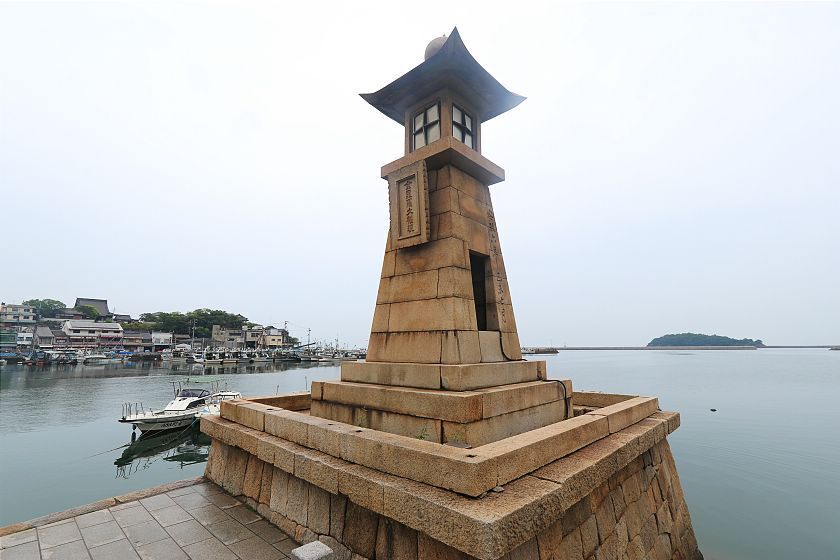
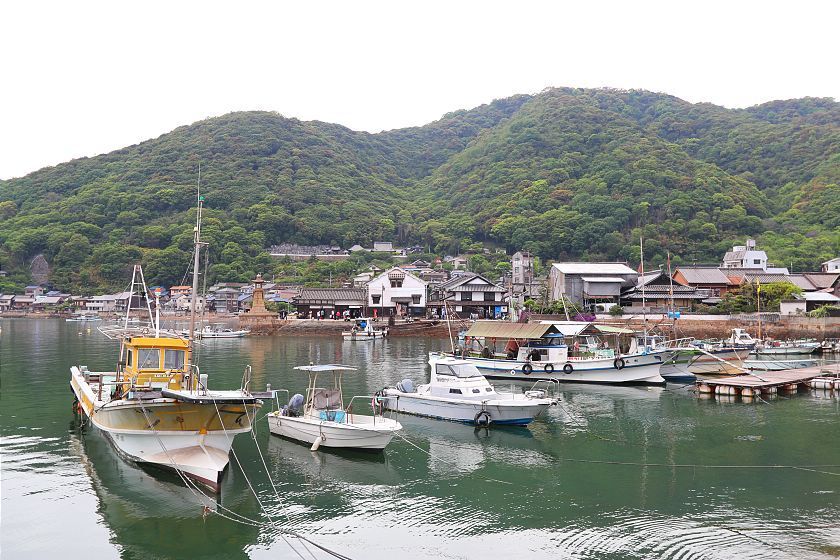
Just a few steps from the Joyato Lighthouse stands another important local landmark - the Ota Residence. Originally occupied by the Nakamura family in the 1600s, this nicely preserved compound was the birthplace of one of the town's most popular exports: a kind of herbal liqueur called homeishu, made from a blend of 16 plants.
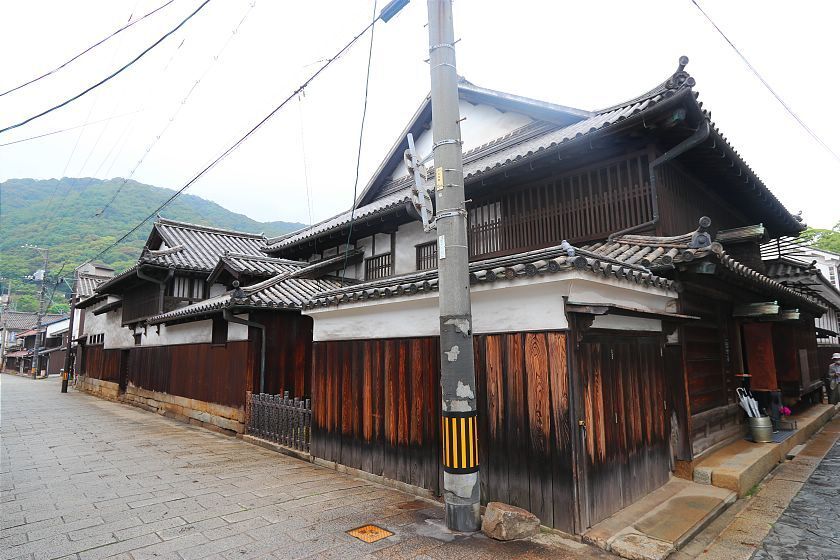
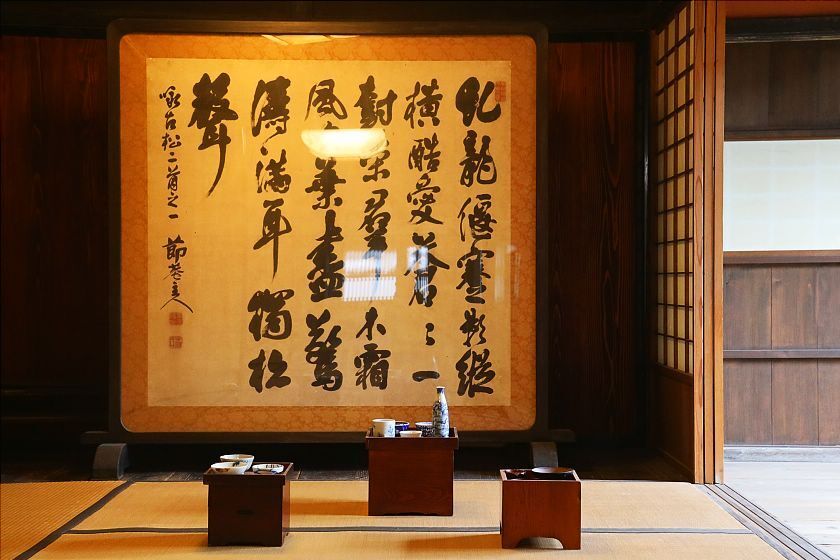
While the Nakamura business closed long ago - the house now bears the name of a wealthy shipping family that bought it in the 19th century, homeishu is still made at four different breweries in the town, each with a slightly different balance and maturation period of the same 16 ingredients.
Today, visitors to the house can explore a suite of tatami rooms and several outbuildings, each complete with original artwork, furnishings and equipment, although explanations were limited to a few signs in Japanese.
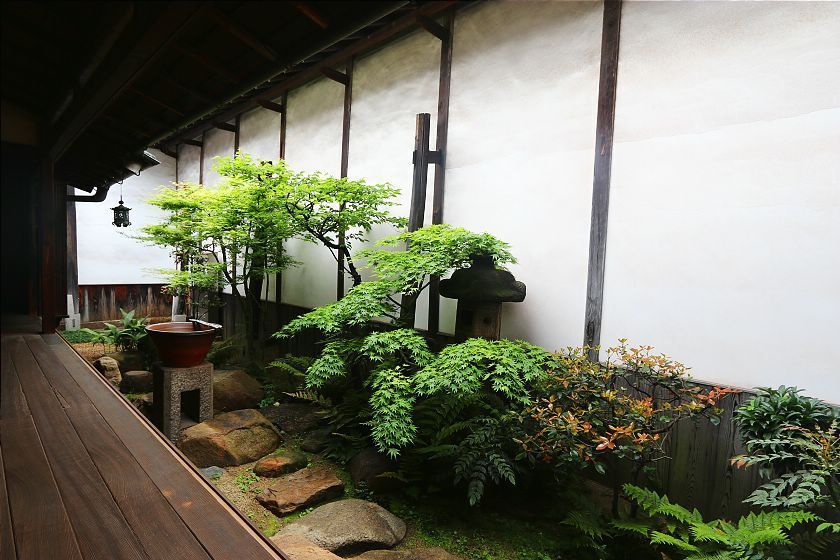

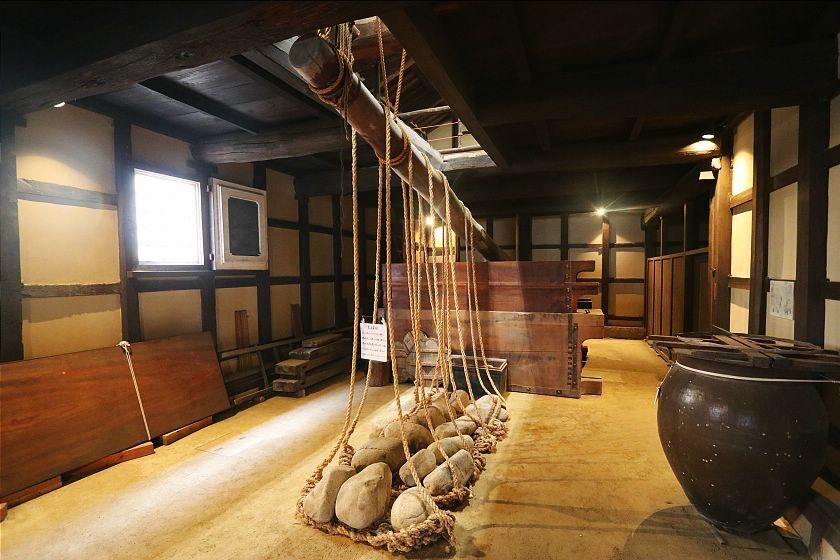
From the Ota Residence - began to work my way west, then north through the town's Teramachi neighborhood, taking its name from the many small temples lining its flagstone streets.
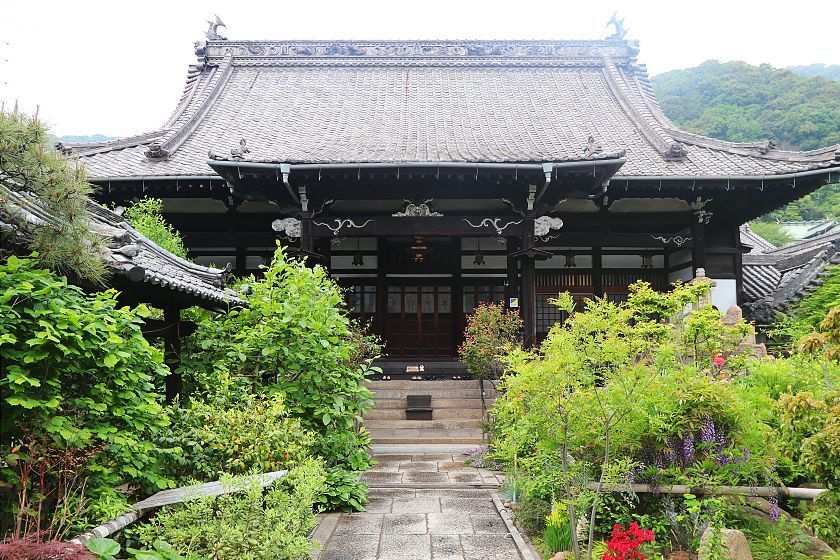
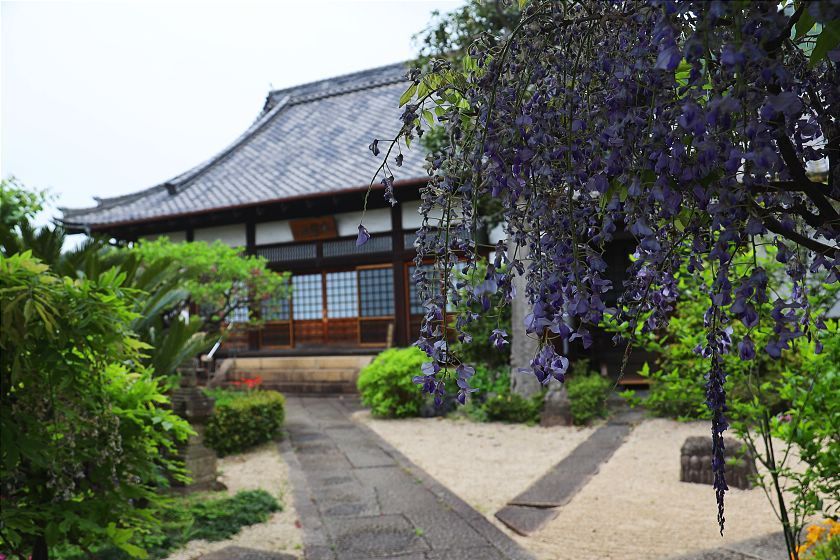
With its gently sloping temple roofs and white-painted walls, the area is somewhat reminiscent of castle towns and in fact this is not far from the truth - Fukushima Masanori, who ruled what is now Hiroshima Prefecture from the end of the Period of Warring States (1467-1590) through to the early Edo Period (1603-1868) is said to have deliberately arranged the temples to form a defensive ring around the long-since demolished Tomonoura Castle.

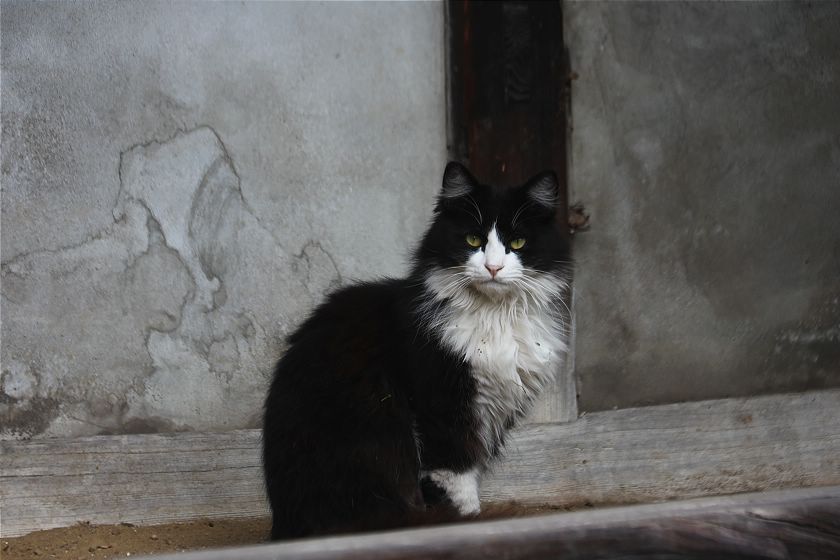
While a quick peek through carved wooden gates onto neatly tended precincts is enough to enjoy most of the temples dotted around this part of town, one exception to this is the Shakado Hall - all that remains of the 14th century Bingo Ankokuji Temple complex save for the foundations of its former main building and the outline of a dry rock garden.
Seen from outside, the hall has a simple outline reminiscent of Tang China architecture, while inside visitors can enjoy several beautiful carvings, including the Amida Buddha flanked by two divine attendants.

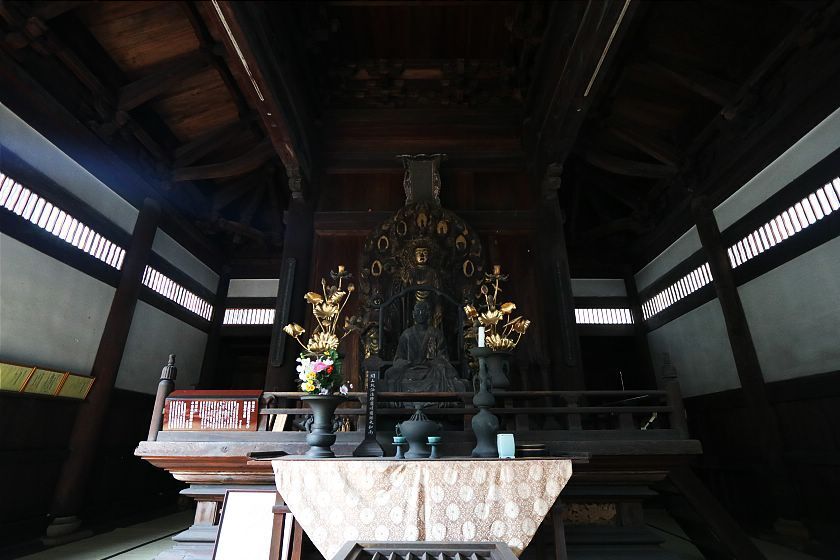
Winding my way through the town's narrow streets back towards the waterfront, I happened across the Tomonoura Museum - a modest-sized local art gallery set inside a 150 year old former storehouse, complete with original plaster walls and stout wooden beams.
In contrast with these traditional surroundings, the exhibition on the day of my visit was a selection of colorful and cheerily eccentric ceramic pieces created during a recent community workshop.
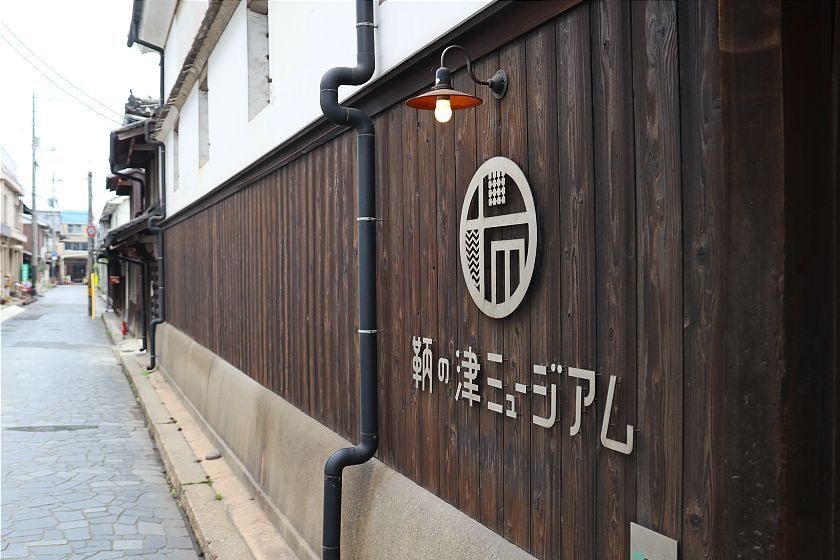
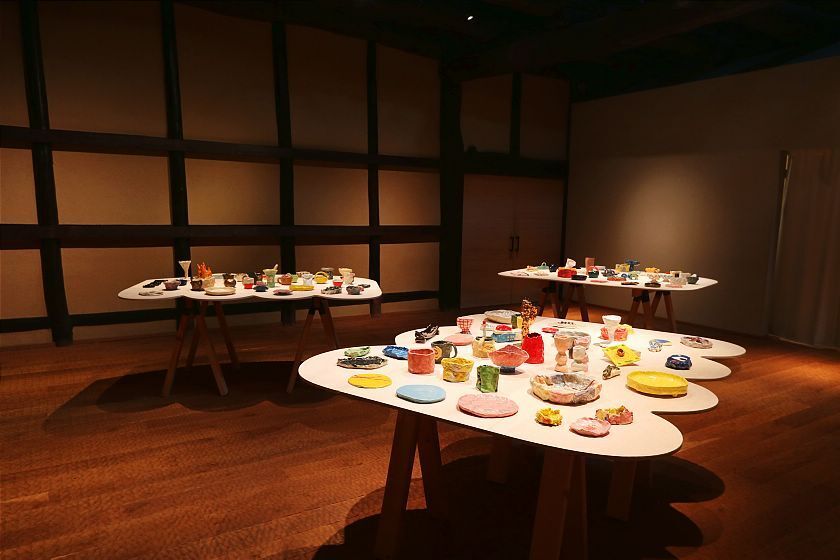
Just around the corner from the museum, I made a stop for lunch at Kinugasa - a neat little restaurant directly across from the sea wall, highlighting the popular local ingredient of tai, or sea bream in a delicious series of neat, small plates.
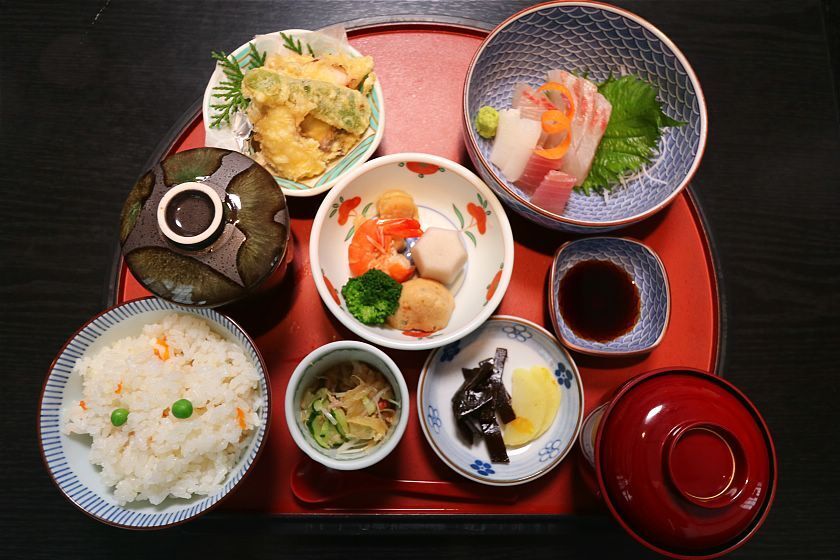
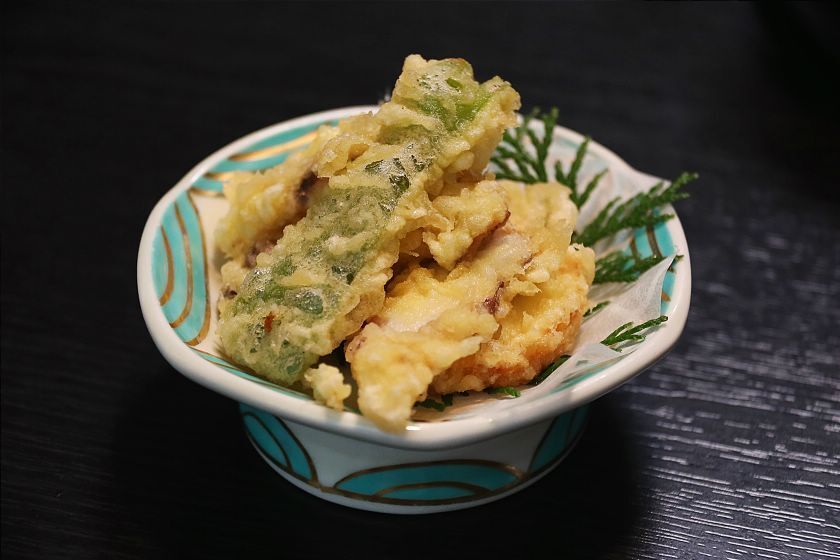
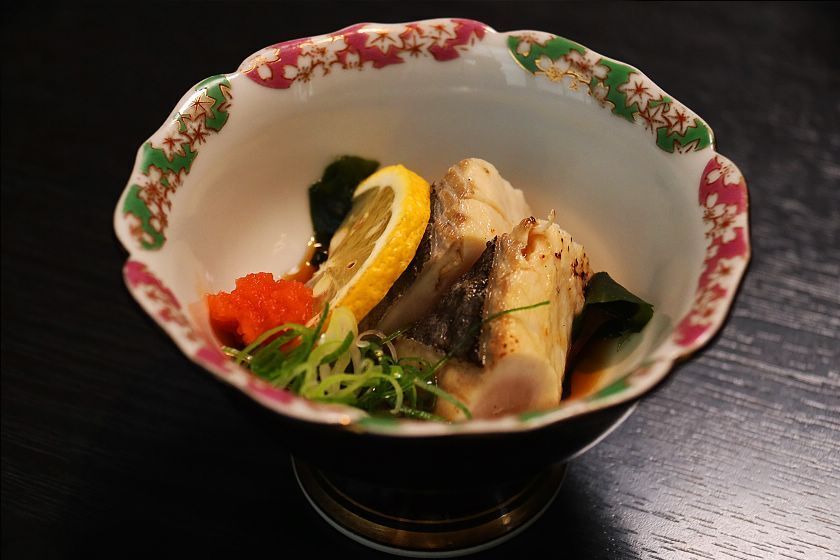
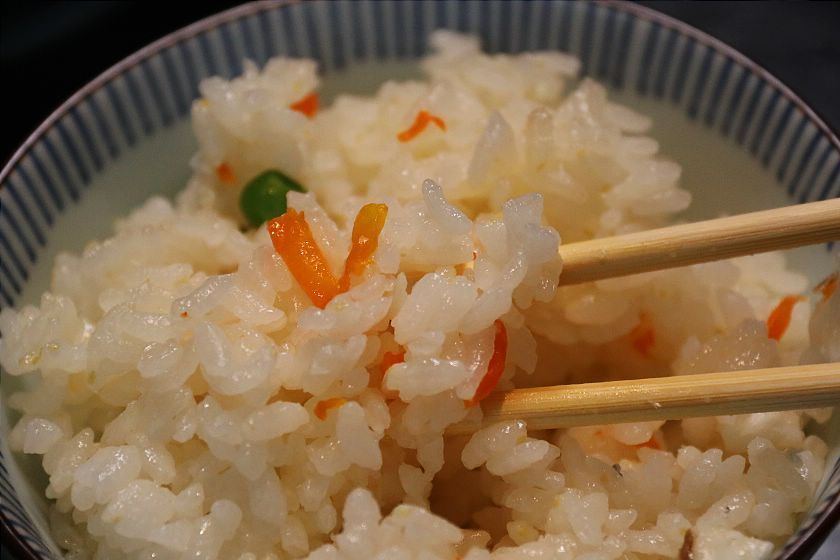
Feeling very satisfied, I took a brief stroll down the waterfront to the ferry terminal, from where a pleasant 30 minute ride brought me to nearby Sensuijima - a thickly forested and largely uninhabited island whose name, formed from the Chinese characters for ghermith and gdrunkennessh or graptureh, speak both to its isolation and wild beauty.
The ferry itself is the Heisei Iroha Maru - a mock 19th century steamship styled in reference to a popular episode from the life of Sakamoto Ryoma, a much revered samurai and opponent of the Tokugawa Shogunate in the waning years of the Edo Period. In 1867, Sakamoto was on board the original Iroha Maru when it collided with a warship belonging to what is today Wakayama Prefecture. Although uninjured, Sakamoto lost a shipment of western-made weapons in the accident and was forced to sojourn in the town for a few days.
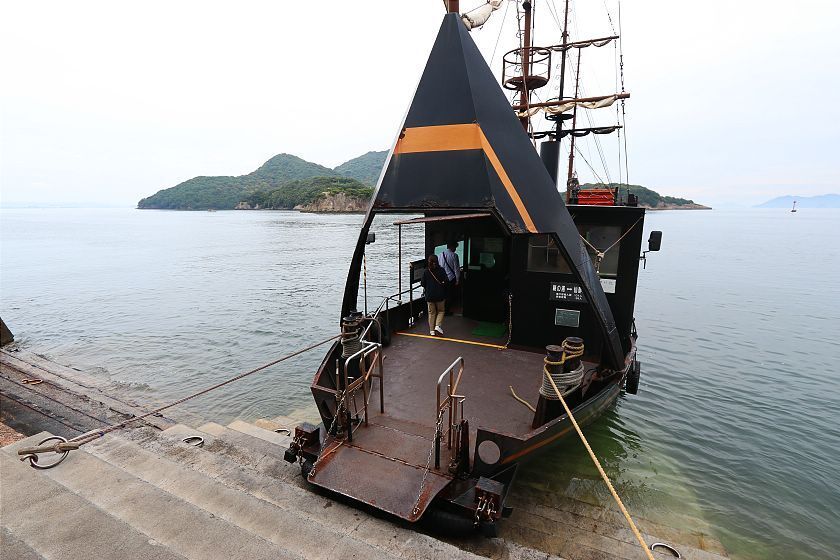

On my way across the harbor, I passed closely by the much smaller island of Bentenjima - inaccessible to tourists, but known for the distinctive two story shrine peeking from behind a low treeline, and for an eleven-story pagoda dated to 1271 and the oldest known stone structure in Hiroshima Prefecture.

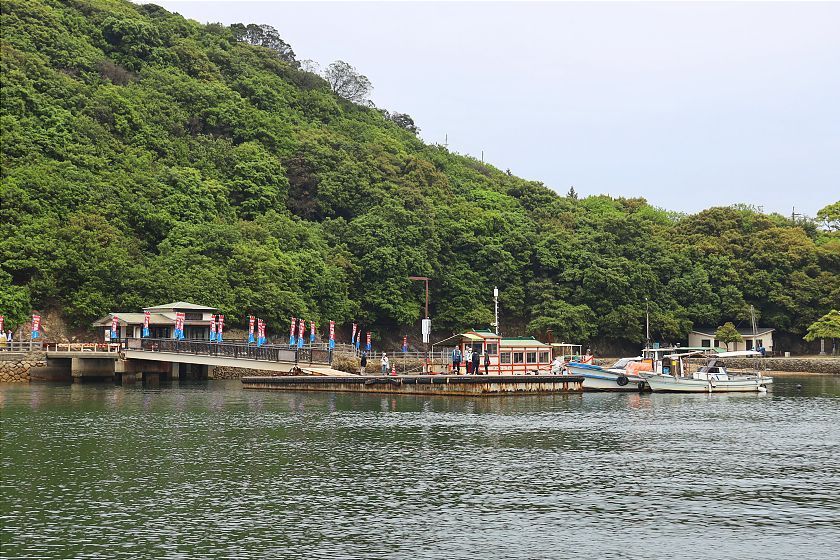
Arriving into Sensuijima's little port, I took a short stroll along the island's south coast but wasn't able to get far due to damage to some of the pathways due to falling rocks. Changing plans, I took a steep path up to the nearby Senningaoka, or Hermit Hill, for a very pleasing view back across the bay towards Tomonoura itself.
With a couple more hours to spare I would certainly have been tempted to push on further into the island's interior to the Omisen Observation Deck and an even grander view across the coast, but for today it was time to retrace my steps to the harbor and back across the bay for a final local highlight.

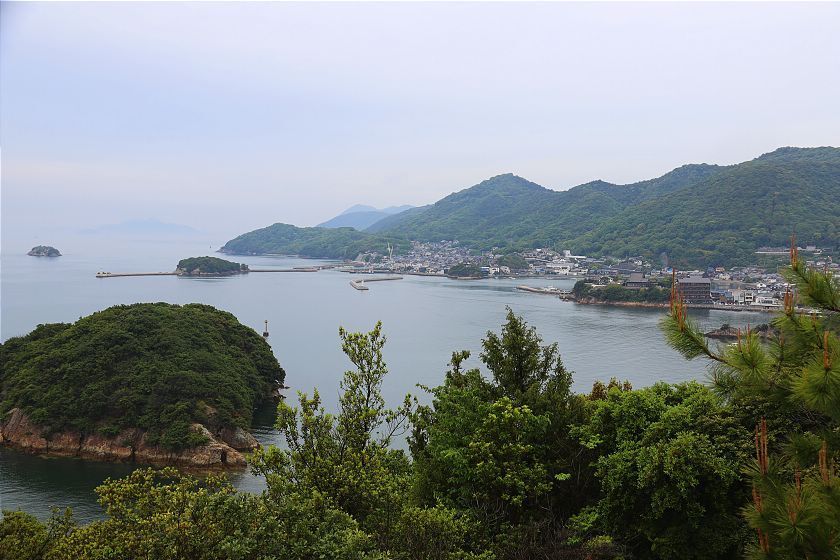
Back on the mainland, I first made a brief detour to the harbor for a visit to Shionone - a cafe selling ice cream and traditional confectionery out of a little timber frame house just a few steps from the water's edge. After a brief chat with the friendly staff, I walked away with a mix of vanilla and lemonade flavored soft serve to enjoy on the harbor steps, lemon being one of the Seto Inland Sea region's most popular exports.
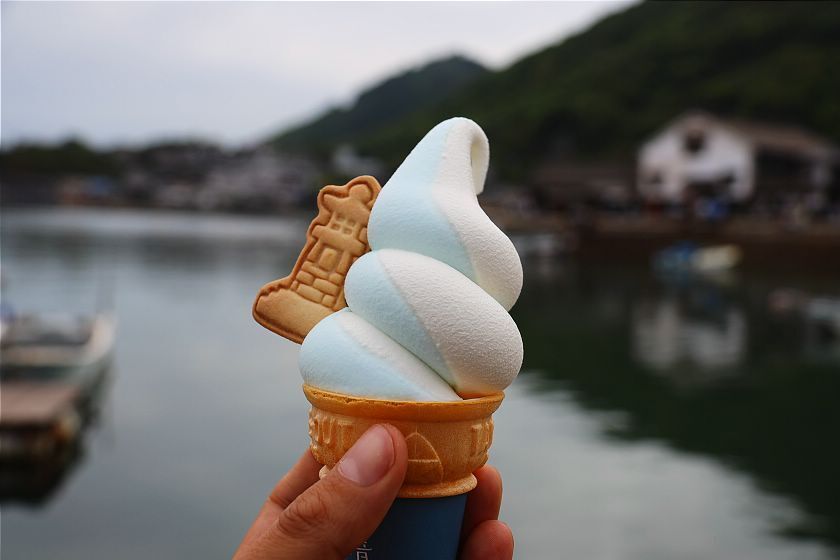
For my last stop in the town, I made my way over to Fukuzenji, a temple belonging to the Shingon school of Buddhism, overlooking the seafront from its perch atop stone foundations resembling those of a castle. While little can be said about its early history save its founding in 950, it would later become well known as a guest house of sorts for visiting Korean dignitaries, several of whom were known to praise the famous view from the Taichoro, or reception hall.
While that same view is the main draw for visitors today, the temple also features a beautiful altar and a number of interesting artifacts, including a statue of Maria Kannon - a representation of the Virgin Mary disguised with Buddhist iconography at a time when Japanese Christians faced great persecution and could only practice their faith in secret.
With that, it was time to say goodbye to Tomonoura, and begin the long journey back towards Tokyo by bus and shinkansen. After having it in mind to visit for a few years, I was delighted that the little town had lived up to my expectations, and I would happily recommend it to anyone looking to spend a relaxing day of sightseeing with the beautiful Seto Inland Sea as a backdrop.
